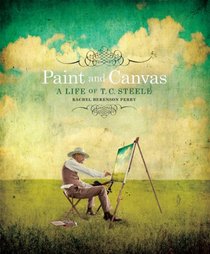Search -
Paint and Canvas: A Life of T.C. Steele
Paint and Canvas A Life of TC Steele
Author:
At the age of fourteen, a young man in Waveland, Indiana, had taken over the family farm after the death of his father. Now responsible for taking care of his widowed mother and supporting his four brothers, he took up the reins on the plow to begin preparing the field for planting. Family legend has it that the young farmer, Theodore Clement St... more »
Author:
At the age of fourteen, a young man in Waveland, Indiana, had taken over the family farm after the death of his father. Now responsible for taking care of his widowed mother and supporting his four brothers, he took up the reins on the plow to begin preparing the field for planting. Family legend has it that the young farmer, Theodore Clement St... more »
ISBN-13: 9780871952950
ISBN-10: 0871952955
Publication Date: 1/24/2012
Pages: 160
Rating: ?
ISBN-10: 0871952955
Publication Date: 1/24/2012
Pages: 160
Rating: ?
0 stars, based on 0 rating
Publisher: Indiana Historical Society
Book Type: Hardcover
Members Wishing: 1
Reviews: Amazon | Write a Review
Book Type: Hardcover
Members Wishing: 1
Reviews: Amazon | Write a Review
Genres:
- Arts & Photography >> History & Criticism
- Arts & Photography >> History & Criticism >> Schools, Periods & Styles >> Modern
- Arts & Photography >> Individual Artists
- Biographies & Memoirs >> Arts & Literature >> Artists, Architects & Photographers
- Biographies & Memoirs >> Regional U.S. >> Midwest
- Children's Books
- History >> Americas >> United States >> State & Local




